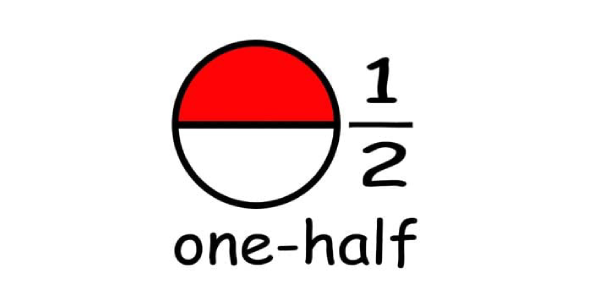Pre-employment Exam Sample Quiz

Preparing for a pre-employment exam is an important step in securing your dream job. This Pre Employment Exam Sample Quiz is designed to help you understand the type of questions you may face during the hiring process. With carefully crafted questions, this quiz tests your knowledge in areas like logical reasoning, verbal ability, quantitative skills, and basic knowledge.
This pre-employment exam sample with answers aims to familiarize you with the structure and difficulty of common pre-employment tests. It helps you identify your strengths and areas that need improvement, allowing you to better prepare for the real exam. Use this Read moreopportunity to practice, analyze your performance, and prepare for the challenges ahead.
Pre-Employment Exam Sample Questions and Answers
- 1.
You are managing a project scheduled to be completed in 12 months, with a budget of $120,000. After three months, you have spent $32,000. At this rate, will the project be under, over, or at budget, and by how much?
- A.
Under budget by $8,000
- B.
Over budget by $8,000
- C.
Exactly at budget
- D.
Over budget by $16,000
Correct Answer
B. Over budget by $8,000 -
- 2.
If you go to bed at 8 PM and set the alarm for 9 AM, how many hours of sleep would you get?
- A.
13 hours
- B.
12 hours
- C.
1 hour
- D.
10 hours
Correct Answer
A. 13 hoursExplanation
The duration of sleep is calculated from the time you go to bed until the alarm rings. From 8 PM to 9 AM, the total time is 13 hours. The clock’s mechanism or winding does not affect this calculation. The sleep period is straightforwardly the time difference between 8 PM and 9 AM, which sums up to 13 hours.Rate this question:
-
- 3.
What is the result of dividing 30 by half and adding 10?
- A.
70
- B.
25
- C.
15
- D.
10
Correct Answer
A. 70 -
- 4.
If you enter a cold and dark room with an oil heater, an oil lamp, and a candle, what should you light first?
- A.
Oil heater
- B.
Candle
- C.
Oil lamp
- D.
Match
Correct Answer
D. MatchExplanation
To light any object, such as a candle, oil heater, or oil lamp, you need a source of ignition. The match is the only item in the list that can be lit directly. Without lighting the match first, it would be impossible to ignite the other objects. Therefore, the first logical step is to light the match, and then use it to ignite your chosen item.Rate this question:
-
- 5.
If you take 2 apples from 3 apples, how many apples do you have?
- A.
1 apple
- B.
2 apples
- C.
3 apples
- D.
None
Correct Answer
B. 2 applesExplanation
The question asks how many apples you "have" after taking 2 apples from 3. The 2 apples that you take are now in your possession, so you "have" 2 apples. The remaining apple is irrelevant to the question, as it focuses on the apples taken. Therefore, the correct answer is 2 apples.Rate this question:
-
- 6.
HAND is to Glove as HEAD is to:
- A.
Hair
- B.
Nape
- C.
Cap
- D.
Scalp
Correct Answer
C. CapExplanation
The relationship between HAND and Glove is that a glove is worn on the hand for protection or comfort. Similarly, a Cap is worn on the HEAD for protection or to provide shade. Hair and scalp are natural parts of the head, and "nape" refers to the back of the neck, which does not fit the analogy. Thus, Cap is the correct answer.Rate this question:
-
- 7.
A boy is 4 years old, and his sister is three times as old as he is. When the boy is 12 years old, how old will his sister be?
- A.
19
- B.
20
- C.
21
- D.
Impossible to determine
Correct Answer
B. 20Explanation
The boy’s sister is three times his age, so if the boy is 4 years old, his sister is 3 x 4 = 12 years old. The age gap between them is 12 - 4 = 8 years. When the boy turns 12, his sister will be 12 + 8 = 20 years old. The age difference remains constant, so her age can be calculated by adding 8 to the boy's age at any given time.Rate this question:
-
- 8.
A farmer initially had 17 sheep. After an unfortunate event, only 9 survived. How many sheep perished?
- A.
7
- B.
8
- C.
12
- D.
9
Correct Answer
B. 8Explanation
The question states that the farmer initially had 17 sheep, and after an unfortunate event, 9 sheep survived. The number of sheep that perished is the difference between the initial total and the surviving count. Subtracting 9 from 17 gives 17 - 9 = 8. Therefore, 8 sheep perished in the unfortunate event.Rate this question:
-
- 9.
What is one-half of one-quarter of one-tenth of 800?
- A.
20
- B.
10
- C.
15
- D.
12
Correct Answer
B. 10Explanation
To solve, first find one-tenth of 800, which is 800 ÷ 10 = 80. Then, find one-quarter of 80, which is 80 ÷ 4 = 20. Finally, find one-half of 20, which is 20 ÷ 2 = 10. The sequence of calculations leads to the final result of 10.Rate this question:
-
- 10.
What is the opposite of "inept"?
- A.
Competent
- B.
Skillful
- C.
Exert
- D.
Expert
Correct Answer
A. CompetentExplanation
"Inept" means lacking skill or ability, while "competent" means having the necessary skill, knowledge, or ability to perform a task successfully. This makes "competent" the exact opposite of "inept." "Skillful" and "expert" describe higher levels of ability but are not direct opposites of "inept." "Exert" is unrelated to the given term. Therefore, "competent" is the most appropriate answer.Rate this question:
-
- 11.
Which of the following choices makes the best comparison? LIVED is to DEVIL as 6323 is to:
- A.
3623
- B.
3263
- C.
3236
- D.
3632
Correct Answer
C. 3236Explanation
The relationship between "LIVED" and "DEVIL" is that "DEVIL" is the reverse spelling of "LIVED." Similarly, to find the equivalent comparison for 6323, the digits are reversed to form 3236. This maintains the same reverse-order relationship as the given word pair.Rate this question:
-
- 12.
John likes 400 but not 300; he likes 100 but not 99; he likes 2500 but not 2400. Which number does John like?
- A.
800
- B.
1800
- C.
900
- D.
200
Correct Answer
C. 900Explanation
John likes: 400 (which is 20 x 20) 100 (which is 10 x 10) 2500 (which is 50 x 50)
But he doesn't like- 300, 99, 2400
From the numbers John likes, it appears he likes perfect squares.
Given the options: 800 - Not a perfect square 1800 - Not a perfect square 900 - A perfect square (30 x 30) 200 - Not a perfect square
So, John would like 900.Rate this question:
-
- 13.
During a pre-employment assessment for a Data Analyst position, you are given the following data for a company's sales over four quarters: Q1: $20,000 Q2: $25,000 Q3: $22,000 Q4: $28,000 Calculate the average quarterly sales. What is the correct average?
- A.
$23,500
- B.
$24,750
- C.
$23,750
- D.
$22,250
Correct Answer
C. $23,750 -
- 14.
A company earned a profit of $15,000 in January, $20,000 in February, and $25,000 in March. What is the average monthly profit?
- A.
$18,333
- B.
$19,000
- C.
$20,000
- D.
$21,000
Correct Answer
C. $20,000Explanation
To calculate the average monthly profit, add the profits for January, February, and March: $15,000 + $20,000 + $25,000 = $60,000. Divide the total profit by the number of months to find the average: $60,000 ÷ 3 = $20,000. The calculation clearly shows that the average monthly profit is exactly $20,000. This method ensures an accurate representation of the company’s monthly earnings over the specified period. The average accounts for variations in monthly profits, balancing lower and higher values to provide a central measure. This is crucial in financial analysis to evaluate consistent profitability over time.Rate this question:
-
- 15.
A train moves at a constant speed of 80 miles per hour. How far will it travel in 2.5 hours?
- A.
180 miles
- B.
190 miles
- C.
200 miles
- D.
210 miles
Correct Answer
C. 200 milesExplanation
The distance a train travels can be calculated using the formula: distance = speed x time. The train moves at 80 miles per hour for 2.5 hours. Multiply the speed (80 miles/hour) by the time (2.5 hours): 80 x 2.5 = 200 miles. This calculation shows how far the train would travel in the given time at a constant speed. This simple yet effective mathematical formula is essential in determining travel distances and times in transportation planning and logistics, ensuring precise outcomes.Rate this question:
-
Quiz Review Timeline +
Our quizzes are rigorously reviewed, monitored and continuously updated by our expert board to maintain accuracy, relevance, and timeliness.
-
Current Version
-
Dec 04, 2024Quiz Edited by
ProProfs Editorial Team -
Feb 13, 2009Quiz Created by
Mispi
 Back to top
Back to top





